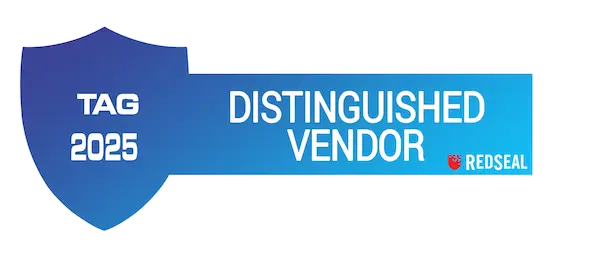Tales from the Trenches: Vol 1 — In security, consistency is key.
Since 2004, RedSeal has helped our customers See and Secure their entire complex network. And while those customers may have understood the value of understanding their environment, how it was connected and see what’s at risk, there is often an “Aha” moment when the true significance is clear. The stories of these moments are lore within the walls of RedSeal. But these tales so clearly illustrate the value of RedSeal beyond just theory that we think they’re worth sharing. In the words of our team in the field, the ones working directly with our customers, this blog series will share the moments where it all gets real.
The first in this series is by Nate Cash, Senior Director, Federal Professional Services/ Director of Information Security at RedSeal.
In security, consistency is key.
Once at a customer site while going through the install of RedSeal, we were going over the hardening standards. I clicked on a couple of configurations to start showing how we could go about setting up best practice checks. I had inadvertently pulled up a device which has not been updated in over five years. The customer was shocked, this is one of the many times where I have had to stop mid-sentence while the person I worked with, reached out to someone to “fix the problem.”
The problem is not the fact the device is had not been updated, but somehow their process missed it. This device was just one of many. The first thing we did with RedSeal was develop a set of custom checks to see how many devices passed or failed the latest hardening standard. Once set we started data collections. In 15 min we saw 30% of the devices were not running their latest hardening standards.
30% of their network devices were not using the latest encryption, had management ACLs set to an old subnet which was now known as their guest subnet, inconsistent SSH versions, telnet still enabled, and some devices pointed to old radius servers, falling back to local accounts. Luckily their firewall blocked the guest subnet from anything internal but, their network management tool still couldn’t access 100% of the devices.
Fixing the underlying problem, not the result of the problem.
With the latest hardening standards in hand, the network engineers got an emergency change request and started logging in to update their configurations. Each device required firmware upgrades, followed by configuration changes. While this was a big undertaking, each day that passed we could grab the numbers and see trending on remediation and report to management.
Once we got the model complete, we found a couple of firewalls that blocked their network management solution from accessing 100% of their network devices. Once the customer opened their firewall, the networking team could start pushing the config to all of the devices.
As luck would have it, the customer was currently undergoing a review of a new hardening standard. We took the new standard, and I showed them how to create checks for each of the configuration points. At the end of the day, the customer had 75 individual checks for each of the network devices. Upon data collection RedSeal will run those checks against each of the configurations automatically and we could ensure that all network devices passed all of checks required for their baseline configuration.
This customer had a unique process where devices about to be deployed were plugged into the network and received a static DHCP address. Their network management tool would push the baseline to the config, then the engineers would login the next day to assign the interface Ips per the documentation. The rest of the hardened config was automagically configured by the tool. With this in hand, we were able to add the ‘staging area’ to RedSeal. With every data collection we noticed random inconsistencies where some device would get the whole config and others did not, using those same checks.
Using RedSeal and custom checks this customer is able to push configs, then double check the config took properly before deploying out into their network. They had better visibility ensuring that all of their devices were hardened, were more confident that automating the work were consistently driving the results they wanted, had a double check with the automation, and essentially reduced their risk significantly, just by checking the configs of their network devices.
Interested in how RedSeal can help your team? Click here to set up a demo or an introductory call.




